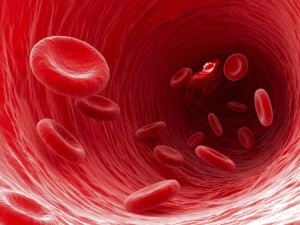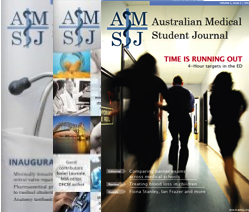Fourth Year Medicine (Undergraduate)
University of Western Sydney
Background: Hypertriglyceridemia is an uncommon cause of acute pancreatitis, which is a life-threatening illness. Conventional management involves fasting, lipid-lowering medication, insulin and heparin. Plasmapheresis is an approach which is used occasionally to achieve rapid lowering of triglyceride levels in patients where conventional management is unsuccessful. It is currently unclear whether plasmapheresis improves outcome in patients with hypertriglyceridaemia-induced pancreatitis. Aim: A literature review and critical analysis was conducted to assess the effectiveness of plasmapheresis in improving patient outcomes in patients with acute pancreatitis secondary to hypertriglyceridemia Methods: The PICO model (Population, Intervention, Comparator, Outcomes) was used to synthesise a research question. Thereafter, a search was conducted through the Scopus database (includes complete MEDLINE coverage) applying the terms ‘plasmapheresis’ OR ‘plasma exchange’ OR ‘lipid apheresis’ AND ‘pancreatitis’ AND ‘hypertriglyceridemia’ OR ‘hyperlipidaemia’ OR ‘hyperlipidemia’. Article titles and/or abstracts were screened for relevance to the topic. Original research articles assessing the efficacy of plasmapheresis in hypertriglyceridaemia-induced pancreatitis were included. Results: To date, no randomised controlled trials have been published assessing the efficacy of plasmapheresis in this population. Two retrospective primary research studies were identified. Both studies demonstrated a rapid reduction in triglyceride levels following plasmapheresis in the magnitude of 65.8-80%. The studies showed no significant clinical benefit in terms of mortality and morbidity, but were limited by small sample size and study design. Conclusion: Current evidence demonstrates that plasmapheresis in the setting of hypertriglyceridemia-induced pancreatitis reduces triglyceride levels by 46-80%. [1] However there is insufficient data to suggest a beneficial effect on clinical outcomes. Well-designed prospective studies with adequate follow-up are required to elucidate whether plasmapheresis is associated with reduced morbidity and mortality in this population.
Introduction
Hypertriglyceridemia is an uncommon cause of acute pancreatitis, accounting for 1.3-3.8 % of cases with an incidence of 18/100,000 per year in the United States of America. [1,2] Primary (genetic) and secondary causes, such as uncontrolled diabetes mellitus, hypothyroidism, alcohol, obesity, certain medications, and pregnancy, are associated with hypertriglyceridemia-induced pancreatitis. [1,3] The mechanism for severe hypertriglyceridemia-inducing pancreatitis remains unclear, [3] although triglyceride levels exceeding 10 mmol/l (1000 mg/dl) can trigger a bout of pancreatitis. [3,4] One postulated theory involves the idea that pancreatic lipase hydrolyses excess triglycerides to produce free fatty acids around the pancreas. These free fatty acids can damage the pancreatic acinar cells and pancreatic vascular endothelium, resulting in ischaemia and inflammation. The acidic environment can further amplify the free fatty acid toxicity in a vicious cycle. [3,4]
 Hypertriglyceridemic pancreatitis is a life-threatening illness with a mortality rate of 7-30%. [5] Complications include sepsis, pancreatic necrosis, abscess formation and renal insufficiency; which account for the high mortality seen in this disease. [3] Optimal management of hypertriglyceridemia-induced pancreatitis is essential to reduce morbidity and mortality. Current management includes fasting, lipid-lowering medication (such as fenofibrate), and insulin and heparin, used to ‘accelerate lipoprotein lipase activity’. [2,4] These interventions have shown limited efficacy in reducing inflammation and life-threatening complications associated with severe acute pancreatitis. Novel therapies are needed to improve patient outcomes. [5]
Hypertriglyceridemic pancreatitis is a life-threatening illness with a mortality rate of 7-30%. [5] Complications include sepsis, pancreatic necrosis, abscess formation and renal insufficiency; which account for the high mortality seen in this disease. [3] Optimal management of hypertriglyceridemia-induced pancreatitis is essential to reduce morbidity and mortality. Current management includes fasting, lipid-lowering medication (such as fenofibrate), and insulin and heparin, used to ‘accelerate lipoprotein lipase activity’. [2,4] These interventions have shown limited efficacy in reducing inflammation and life-threatening complications associated with severe acute pancreatitis. Novel therapies are needed to improve patient outcomes. [5]
Plasmapheresis is defined as ‘removing the plasma and replacing it with donor plasma or a plasma substitute’. [6] The term plasmapheresis is used interchangeably with the term ‘therapeutic plasma exchange’. The use of plasmapheresis in patients with hypertriglyceridemia can be traced back to a case report in 1978. [3] However, it is not widely utilised in this patient population at present. Given that plasmapheresis provides rapid removal of the triglycerides responsible for underlying inflammation in hypertriglyceridemia-induced pancreatitis, it is expected that this intervention may prove highly effective in reversing this sub-type of acute pancreatitis. The aim of this review was to assess the effectiveness of plasmapheresis in achieving positive patient outcomes (as per Table 1) in patients with acute pancreatitis secondary to hypertriglyceridemia.
Methods
The PICO model was used to synthesise the research question. [7]
Search Methodology
The literature search was conducted on Scopus, which is one of the largest databases of abstracts and citations of research literature, and includes complete coverage of the MEDLINE database. [8] The following search terms were used: (“plasmapheresis” OR “plasma exchange”) AND “pancreatitis” AND (“hypertriglyceridemia” OR “hyperlipidaemia” OR “hyperlipidemia”). The initial database search yielded a total of 139 documents, of which 110 were written in English. After further limiting the search query to include only ‘articles’ or ‘reviews’, a total of 86 documents were found. The documents were then sorted by relevance, and titles and abstracts were screened to identify articles that reported on the use of plasmapheresis in the management of hypertriglyceridemia-induced acute pancreatitis. A total of 28 relevant articles were identified: one primary research study, one review paper, one guideline (the 2010 American Society for Apheresis (ASFA) guideline), eleven case-series (62 patients), and fourteen individual case studies (Figure 1). Review of the references and citations of these studies yielded an additional two articles: one original retrospective study and one review. Focused searches revealed no additional relevant articles. The inclusion criterion for this review was limited to primary research studies only.
Results
Two cohort studies meeting the pre-specified inclusion and exclusion criteria were included. No randomised-controlled trials were identified, and are probably not feasible given the low incidence of hypertriglyceridemia-induced pancreatitis.
Chen et al. [9] conducted a retrospective cohort study to compare the mortality and morbidity in patients with hyperlipidaemic pancreatitis before and after the introduction of plasmapheresis in Shin kong Wu-Ho-Su Memorial Hospital, Taiwan, in August 1999. This study separated the patients into two cohorts: group I (pre-August 1999) and group II (post-August 1999). There were 34 patients in group I and 60 patients in group II, of which twenty patients received plasmapheresis. The cohort was recruited appropriately with all patients fitting the time-frame criteria (pre- or post-August 1999). There was no statistical difference between the demographics of group I and group II, including mean age, gender distribution, initial mean triglyceride level, diabetes mellitus, alcohol consumption, Ranson’s score ≥ 3 and Balthazar grade D or E. [9]
Furthermore, patients with severe hypertriglyceridemic pancreatitis (defined by Ranson’s score ≥ 3) were analysed separately, comparing Group A (those who received plasmapheresis) and Group B (those who did not receive plasmapheresis). There were ten patients in Group A and nineteen patients in Group B. Morbidity was defined in terms of systemic complications, including acute renal failure, upper gastrointestinal bleeding, shock and acute respiratory distress syndrome; and local complications, in particular abscess and pseudocyst formation.
The results were analysed using a t-test and chi-square test. There was no statistical significance (defined as p<0.05) between the mortality and complications of patients with severe pancreatitis who received plasmapheresis, compared to those who received conventional therapy. Similarly, there was no significant difference (defined as p<0.05) between the clinical outcomes of pre-August 1999 and post-August 1999 samples. Interestingly, Chen et al. found that the mean serum concentration of triglycerides and lipase were markedly reduced after plasmapheresis, with a 65.8% reduction of triglyceride levels and 88.8% reduction of lipase levels. [9]
Gubensek et al. [4] also carried out a retrospective cohort study. They looked at two sets of patients. The first sample consisted of 50 patients who were treated with plasmapheresis between 1992 and 2008 at a tertiary-care hospital (University Medical Center Ljubljana, Slovenia), and the triglyceride and total cholesterol levels before and after plasmapheresis were compared. The demographic characteristics of these patients revealed a gender bias, with 92% of the sample being male. The second set of patients included 40 patients treated between 2003 and 2008 with plasmapheresis. The Acute Physiology and Chronic Health Evaluation II (APACHE II) score was used as a prognostic tool, with a score of < 8 indicating mild pancreatitis and a score of ≥ 8 indicating severe pancreatitis. A comparison of mortality rates was made between these two groups. The mortality rate was 4% and 42% respectively, with statistically significant differences between the two groups (p<0.001).
The results of the first cohort in the study by Gubensek et al. [4] showed a statistically significant (defined as p<0.001) reduction in triglyceride and cholesterol levels after plasmapheresis within 24 hours. On average, a reduction in serum triglyceride levels of approximately 80% was achieved by plasmapheresis. The analysis of the second cohort showed a significantly higher mortality in patients who had an APACHE II score of ≥ 8 (42% vs. 4%). The overall mortality was 15%, which the authors acknowledged as ‘considerable’.
Discussion
The efficacy of plasmapheresis in hypertriglyceridemia-induced pancreatitis has been unclear. In an attempt to clarify this, we conducted a systematic review of published studies and guidelines investigating the benefits of this therapy. Studies by Chen et al. and Gubensek et al. reported on different populations; however both highlighted that a significant reduction in serum triglyceride levels can be achieved by plasmapheresis in patients with hypertriglyceridemic pancreatitis. Chen et al. [9] showed a reduction in triglyceride levels by 65.8%, and Gubensek et al. [4] demonstrated an average reduction of 80% in triglyceride levels. It should be highlighted that a rapid reduction in triglyceride and cholesterol levels does not necessarily imply a clinical benefit to the patient. The exact pathophysiology of hypertriglyceridemia-induced pancreatitis remains unclear. During a prolonged episode of acute pancreatitis cellular injury can occur which may remain irreversible regardless of lowering of triglyceride levels, although further pancreatic destruction and recurrent episodes may be reduced. [5,10-11] Admission triglyceride levels have not been associated with severity, complication rates or clinical course. [5] Therefore more research is required to look at the effect of the rapid lowering of triglyceride levels on patient outcomes.
The weaknesses of both studies are the small sample size and sub-optimal study design. Chen et al. only looked at a small number of patients from a single hospital, and no definitive conclusions could be reached based on the limited statistical power of the study. Moreover, Chen et al. [9] compared group I and group II outcomes, despite group II comprising of 40 patients who had not received plasmapheresis in addition to the twenty patients who had received plasmapheresis. Therefore, since group II comprised of a mixed sample of patients receiving plasmapheresis and those receiving conventional treatment, the outcomes do not give a true picture of the effect of plasmapheresis only. A statistical comparison between group I and group II only accentuates that there was no benefit in terms of mortality and morbidity between patients presenting with acute pancreatitis secondary to hypertriglyceridemia before August 1999 or after August 1999 at that specific hospital. Thus, any conclusion on the effectiveness of plasmapheresis at reducing patient morbidity and mortality using these statistical results is invalid.
On the other hand, Chen et al. [9] should be commended on their detailed explanation of the apheresis procedure performed, which was well controlled. However, replacement fluid was either fresh frozen plasma (N=8) or isovolumetric 5% albumin solution (N=12). The authors did not adjust their results for this potentially confounding variable. The mean serum concentration of triglycerides and lipase were markedly reduced after plasmapheresis, with a 65.8% reduction of triglyceride levels and 88.8% reduction of lipase levels. However, the time period in which these reductions occurred post-procedure is unclear, and no comparisons were made with the reduction in serum lipase and triglycerides in patients presenting pre-August 1999. The authors did not follow the patients over a considerable time period and were unable to assess recurrence of acute pancreatitis or mortality between patient samples.
The research study by Chen et al. [9] is essentially the only study comparing the use of plasmapheresis and conventional treatment in acute pancreatitis due to hypertriglyceridemia. This study found no differences in mortality and morbidity between conventional therapy and plasmapheresis, but the results need to be carefully evaluated, as mentioned above. A review of this study by the 2010 ASFA Guidelines highlight that ‘adequate information was not provided to ascertain the comparability of the two groups’. [1] Chen et al. stated that earlier intervention might provide positive outcomes for plasmapheresis, given that the median time for starting plasma exchange was three days for their patients. [9] This is a possible explanation for the results, and further studies are needed to evaluate the relationship between the time of initiating plasmapheresis and patient outcomes. A review by Tsuang et al. reported that ‘early initiation of treatment for hypertriglyceridemic pancreatitis is likely to be beneficial’, [3] based on findings from the retrospective case series by Kyriakidis et al., who reported positive patient outcomes in eight out of nine patients treated with plasmapheresis within 48 hours of diagnosis. [2]
The study by Gubensek et al. is also limited, in that it did not compare the effect of plasmapheresis with conventional treatment options. No comparison was made with the mortality rate of patients who were treated conventionally. The study makes a strong point on the effectiveness of plasmapheresis in acutely reducing serum triglyceride and cholesterol levels, but does not determine whether there is any clinical benefit of this to the patient.
The indications and criteria for applying plasmapheresis was not consistent across the literature. Plasmapheresis is commonly used in settings where there is inadequate outcomes achieved using conventional management. [5] However, the patients treated with plasmapheresis in Chen et al. [9] and Gubensek et al. [4] include those with mild to moderate pancreatitis as well as severe pancreatitis (evaluated using Ranson’s scores or APACHE II score), but no information was given about any conventional treatment prior to the initiation of plasmapheresis. Therefore, it is unclear whether any prior conventional treatment had an effect on patient outcomes.
Neither study reviewed the potential symptomatic relief from plasmapheresis. A possible reason could be due to the subjectivity in measuring this outcome and the retrospective nature of the studies. Evaluation of potential symptomatic relief from plasmapheresis may be useful in minimising the severe pain associated with hypertriglyceridaemic pancreatitis.
ASFA [1] conducted a literature review to evaluate the rationale for plasmapheresis in patients with hypertriglyceridemic pancreatitis. This review is consistent with the findings of studies by Chen et al. and Gubensek et al., and reported no randomised controlled trial evaluating the effectiveness of plasmapheresis in these patients. Their search on PubMed yielded twelve case-series and 28 case reports, with sample sizes ranging from 100-300. The ASFA have given a Category III indication to the use of plasmapheresis in patients with hypertriglyceridemic pancreatitis, which implies that the optimum role of apheresis therapy in these patients is not established. ASFA highlight the role of clinicians in making individualised decisions due to the weak evidence in this area. [1]
There is clearly a need for stronger evidence to determine the effectiveness of plasmapheresis in patients with hypertriglyceridemic pancreatitis. However, the low incidence of this disease means that randomised controlled trials may not be feasible. Gubensek et al. [4] argue that it would be questionable to perform a randomised controlled trial, given the large reduction in triglyceride levels by plasmapheresis. The ethical issues and feasibility of performing a randomised controlled trial on a small sample are barriers in answering this question. Nevertheless, large cohort studies with sufficient follow-up and appropriate adjustments for population stratification should provide immense support either in favour or against the use of plasmapheresis. Furthermore, appropriate studies assessing the effectiveness of rapidly lowering triglyceride levels on patient outcomes should be conducted.
Conclusion
There is insufficient evidence to confirm that plasmapheresis is a beneficial treatment option for patients with acute pancreatitis secondary to hypertriglyceridemia. Current literature shows that plasmapheresis promotes a rapid reduction in triglyceride levels of 46-80% [1], however its effect on patient outcomes remains unclear. Adequately powered prospective studies with long term follow-up are recommended to elucidate whether plasmapheresis is associated with reduced morbidity and mortality in this population.
Acknowledgements
Thank you to Dr Channa Perera, Endocrinologist at Campbelltown Hospital, for the inspiration to research and write up on this topic.
Conflict of interest
None declared.
Correspondence
M Rehmanjan: mrehmanjan@gmail.com
References
[1] Szczepiorkowski ZM, Winters JL, Bandarenko N, Kim HC, Linenberfer ML, Marques MB, et al. Guidelines on the use of therapeutic apheresis in clinical practice. Journal of Clinical Apheresis 2010; 25:83-177.
[2] Kyriakidis AV, Raitsiou B, Sakagianni A, Harisopoulou V, Pyrgioti M, Panagopoulou A, et al. Management of Acute Severe Hyperlipidemic Pancreatitis. Digestion 2006; 73(4):259-64.
[3] Tsuang W, Navaneethan U, Ruiz L, Palascak JB, Gelrud A. Hypertriglyceridemic Pancreatitis: Presentation and Management. The American Journal of Gastroenterology 2009;104:984-91
[4] Gubensek J, Buturovic-Ponikvar J, Marn-Pernat A, Kovac J, Knap B, Premru V, et al. Treatment of hyperlipidemic acute pancreatitis with plasma exchange: A single-center experience. Therapeutic Apheresis and Dialysis 2009;13(4):314–17.
[5] Lebenson J, Oliver T. Acute pancreatitis [Internet]. Rijeka, Croatia: InTech; 2012. Chapter 16, Hypertriglyceride Induced Acute Pancreatitis [cited 2013 Aug 25]. Available from: http://www.intechopen.com/books/acute-pancreatitis/hypertriglyceride-induced-acute-pancreatitis
[6] Brooker C. Medical Dictionary. Philadelphia. Churchill Livingstone Elsevier; 2008.
[7] University of Warwick Library. The Pico Method [Internet]. 2010 Sep 1 [cited 2012 Aug 6]. Available from: http://www2.warwick.ac.uk/services/library/tealea/sciences/medicine/evidence/pico/
[8] Elsevier. Scopus Database [Internet]. 2012 [cited 2012 Aug 6]. Available from: http://www.scopus.com/home.url?null
[9] Chen JH, Yeh JH, Lai HW, Liao CS. Therapeutic plasma exchange in patients with hyperlipidemic pancreatitis. World Journal of Gastroenterology 2004; 10(15):2272-74.
[10] Banks PA, Conwell DL, Toskes PP. The Management of Acute and Chronic Pancreatitis. Gastroenterol Hepatol 2010; 6(2 Suppl 5):1–16.
[11] Piolot A, Nadler F, Cavallero E, Coquard JL, Jacotot B. Prevention of recurrent acute pancreatitis in patients with severe hypertriglyceridemia: value of regular plasmapheresis. Pancreas 1996; 13(1):96-9.
 Download PDF
Download PDF Read online
Read online You can subscribe by e-mail to receive each issue when it's published.
You can subscribe by e-mail to receive each issue when it's published.
 Download the issue
Download the issue Print this extract
Print this extract Share on Facebook
Share on Facebook


